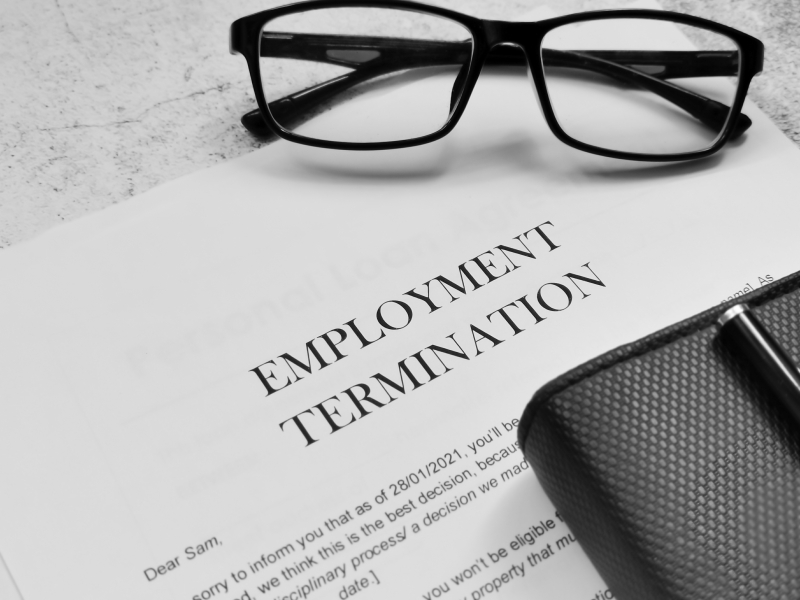
Dismissing an Employee Within 2 Years
Introduction: The Critical 2-Year Mark
When it comes to employment law in the UK, reaching the two-year employment anniversary represents a change in the area of employee rights. If you’re considering dismissing an employee within 2 years, it’s essential to understand the implications this decision can bring. As an employment lawyer advising countless businesses, I’ve seen how vital it is for employers to tread carefully in this sensitive period.
Significance of the Two-Year Employment Threshold
So, why is the two-year mark so important? Primarily, after an employee has been with a company for two years, they gain full employment protection rights including the right not to be unfairly dismissed and to claim statutory redundancy pay. Prior to this, their rights in this area are more limited. However, that doesn’t mean employers have free rein during this period. There are still specific guidelines and regulations in place:
- Employees can still claim for ‘automatic unfair dismissal’.
- Claims related to discrimination are valid from day one of employment.
- Whistleblowing protections also apply irrespective of service length.
- Health and safety claims remain valid regardless of tenure.
Shift in Employee’s Legal Rights Post This Period
Once an employee crosses the two-year threshold, the dynamics change. They’re no longer just protected against forms of discrimination or retaliation for whistleblowing. They now have the right to contest any dismissal they deem unfair. This means, as an employer, dismissing an employee after this period requires more meticulous documentation and a fair reason.
In conclusion, when considering dismissing an employee within 2 years, it’s imperative to be fully informed. This period is fraught with potential legal pitfalls, even if it offers more flexibility than the time that follows. As always, it’s about balancing the needs of your business with the rights of your employees.
Understanding the Legal Grounds for Dismissing an Employee within 2 Years
Dismissing an employee, especially within the crucial two-year window, requires not only an understanding of the business’s needs but also a firm grasp on the legal landscape. As an employment lawyer, I’ve guided numerous employers through this process, ensuring they remain on the right side of the law while making tough decisions.
Fair Reasons for Dismissing an Employee within 2 Years
It’s a misconception that the first two years give employers a carte blanche when letting go of an employee. There are indeed fair reasons for dismissal, even during this period. Recognising these reasons is the first step towards making an informed decision:
- Capability or qualifications – when the employee cannot do the job they were hired for.
- Misconduct – this involves violations of workplace rules or policies.
- Redundancy – when the role is no longer required due to business needs.
- Statutory restrictions – when continuing employment would breach the law.
- Some other substantial reason – this is a catch-all, but it’s essential to tread carefully here.
Differentiating Between Lawful Terminations and Potential Claims of Wrongful Dismissal
Staying lawful goes beyond having a fair reason; the process of dismissing an employee within 2 years should be transparent and justifiable. It’s vital to:
Ensure clear communication at all stages. From the moment issues arise to the point of potential dismissal, keeping lines of communication open helps avoid misunderstandings.
Document everything. Whether it’s performance reviews, disciplinary actions, or meetings, having a record is your best defence against potential claims.
Mistakes during the dismissal process can lead to allegations of wrongful dismissal. This doesn’t only refer to situations where the reason for dismissal was unjust but also to cases where the process itself was flawed.
In essence, understanding the legal grounds for dismissal is about more than just the law. It’s about fairness, transparency and ensuring that both the employer’s and the employee’s rights are upheld. As always, when in doubt, consult with a specialist to ensure you’re making the right decisions.
Probationary Periods: A Potential Safety Net
The probationary period is often viewed as a safety net for employers, providing an opportunity to assess a new hire’s suitability for a role. As an employment lawyer, I’ve seen the benefits of a well-structured probationary period, but it’s also essential to understand its limitations and the responsibilities it carries.
How a Probationary Period Can Offer Employers More Flexibility
A probationary period, usually lasting between three to six months, allows you to evaluate an employee’s performance, conduct, and overall fit within the company. The advantages of such a period include:
- Ability to set clear expectations for the new hire.
- Flexibility to part ways if the employee doesn’t meet these expectations, often with shorter notice periods.
- Opportunity for structured feedback, helping the employee adapt to the role.
- Legal clarity, as dismissing an employee within 2 years – especially during probation – can be smoother if all protocols are followed.
Ensuring Your Probation Terms Are Clear and Legally Sound
While a probationary period offers flexibility, it doesn’t negate the employee’s rights or your responsibilities as an employer. It’s paramount to:
Be transparent from the outset. Clearly outline the terms of the probation in the employment contract, detailing expectations, duration, and any potential extension.
Provide regular feedback. This not only helps the employee but also establishes a record should performance concerns arise.
Remember that statutory rights, such as protection against discrimination, apply from day one, irrespective of probationary status.
In conclusion, while the probationary period can act as a safety net, it’s not an excuse for hasty or ill-considered decisions. It serves as a structured, fair and transparent way to integrate new hires, allowing both parties to assess the suitability of the partnership. When handled correctly, it can be an effective tool in managing the complexities of dismissing an employee within 2 years. However, always approach it with care, understanding, and a genuine commitment to fairness.
Best Practices: Procedure for Dismissing an Employee within 2 Years
With years of experience advising businesses, I understand the importance of adhering to best practices to ensure a smooth and legally compliant process. Taking the right steps not only safeguards your business but also respects the rights of your employees.
Importance of Clear Communication and Documentation
Clear communication lies at the heart of any dismissal process. Whether it concerns performance issues, conduct, or other substantial reasons, ensuring that the employee understands the reasons behind the decision is paramount. See Crafting an effective employee dismissal letter. A few essential practices include:
- Initiating open dialogues early, addressing any concerns as they arise.
- Documenting every meeting, review, or relevant communication, offering both clarity and a protective record.
- Following written procedures, so there’s a consistent and understood framework for all parties.
- Offering the employee a chance to voice concerns or provide explanations during discussions.
The Role of Disciplinary and Grievance Procedures for Dismissing an Employee within 2 Years
Even during the initial employment period, having a structured approach to disciplinary and grievance issues is crucial. These procedures offer a framework for handling issues methodically, ensuring fairness throughout. Remember to:
- Clearly outline these procedures in the employment contract or staff handbook, ensuring accessibility for all employees.
- Adhere strictly to the procedures, demonstrating consistency and fairness in every case.
- Offer support, such as a colleague or union representative, during any formal processes to the employee.
Ensuring a Fair and Consistent Approach
Consistency is key when it comes to dismissing an employee. It protects your business from claims of discrimination or unfair treatment. To maintain fairness:
- Ensure decisions are not influenced by any protected characteristics, such as age, gender, or race.
- Apply the same standards to all employees, regardless of their position or tenure.
- Seek legal advice when uncertain, especially when considering dismissing an employee within 2 years.
In wrapping up, the dismissal process, though challenging, can be managed with diligence, fairness and a keen understanding of best practices. By fostering open communication, adhering to procedures and ensuring consistent treatment, you can navigate this complex task with confidence and integrity.
Potential Pitfalls: Unfair Dismissal and Discrimination Claims
As an employment lawyer, I’ve witnessed first-hand the challenges employers face and the repercussions of not treading cautiously. Understanding the risks associated with unfair dismissal and discrimination claims is vital to safeguarding your business and maintaining its reputation.
Dismissing an Employee Doesn’t Mean They Can’t Bring Other Claims
Contrary to popular belief, the first two years don’t grant complete immunity against claims from employees. Even within this window, there are certain rights an employee can exercise. It’s important to be aware that:
- Discrimination claims related to protected characteristics can be brought forward from day one.
- Retaliation against whistleblowing remains a viable claim regardless of the employment duration.
- Dismissals due to trade union activities or for asserting statutory rights can also be challenged.
- Issues related to maternity or paternity rights shouldn’t be grounds for dismissal.
Understanding Protected Characteristics to Avoid Discrimination Claims
One of the most critical areas employers must navigate with care is ensuring no dismissal decision is influenced, even inadvertently, by protected characteristics. These include factors such as age, gender, race, disability, sexual orientation and religion, among others. Discrimination claims, even within the first two years, can tarnish a company’s reputation and result in significant legal repercussions.
To steer clear of potential pitfalls, always ensure your decisions are based solely on legitimate business reasons. This not only upholds the dignity and rights of the employee but also places your business on firm legal ground.
In conclusion, while dismissing an employee within 2 years might seem like a straightforward process, it’s crucial to remain vigilant. Upholding the principles of fairness, equity, and transparency will not only foster a positive work environment but also protect your business from potential legal quagmires. When in doubt, always seek expert guidance to navigate the intricacies of employment law.
Call John Bloor at EBS Law on 01625 87 4400 if you are an employer and need free Employment Law Advice.

